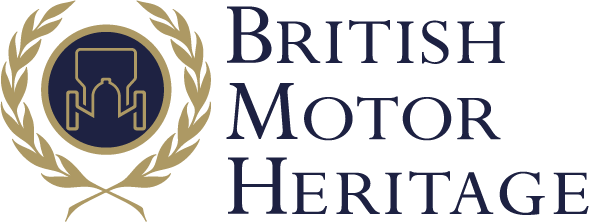The Triumph brand has enjoyed a rich and varied visual history, with several logos representing the marque over the decades.
While some designs remain iconic, others like the early British Leyland corporate logo have largely faded from public memory. This presents a unique challenge today: selecting a Triumph logo that both fits the era and resonates with enthusiasts, particularly for vehicles produced during the early British Leyland period.
We explore the Triumph logos and imagery curated by British Motor Heritage (BMH), briefly touch on the lesser-known BL corporate logo, and match each emblem to the car models they originally adorned. We’ll also look at the more ambiguous cases – those early British Leyland Triumphs that now require a little creative thinking when it comes to badge authenticity.
1. The Triumph ‘Globe’
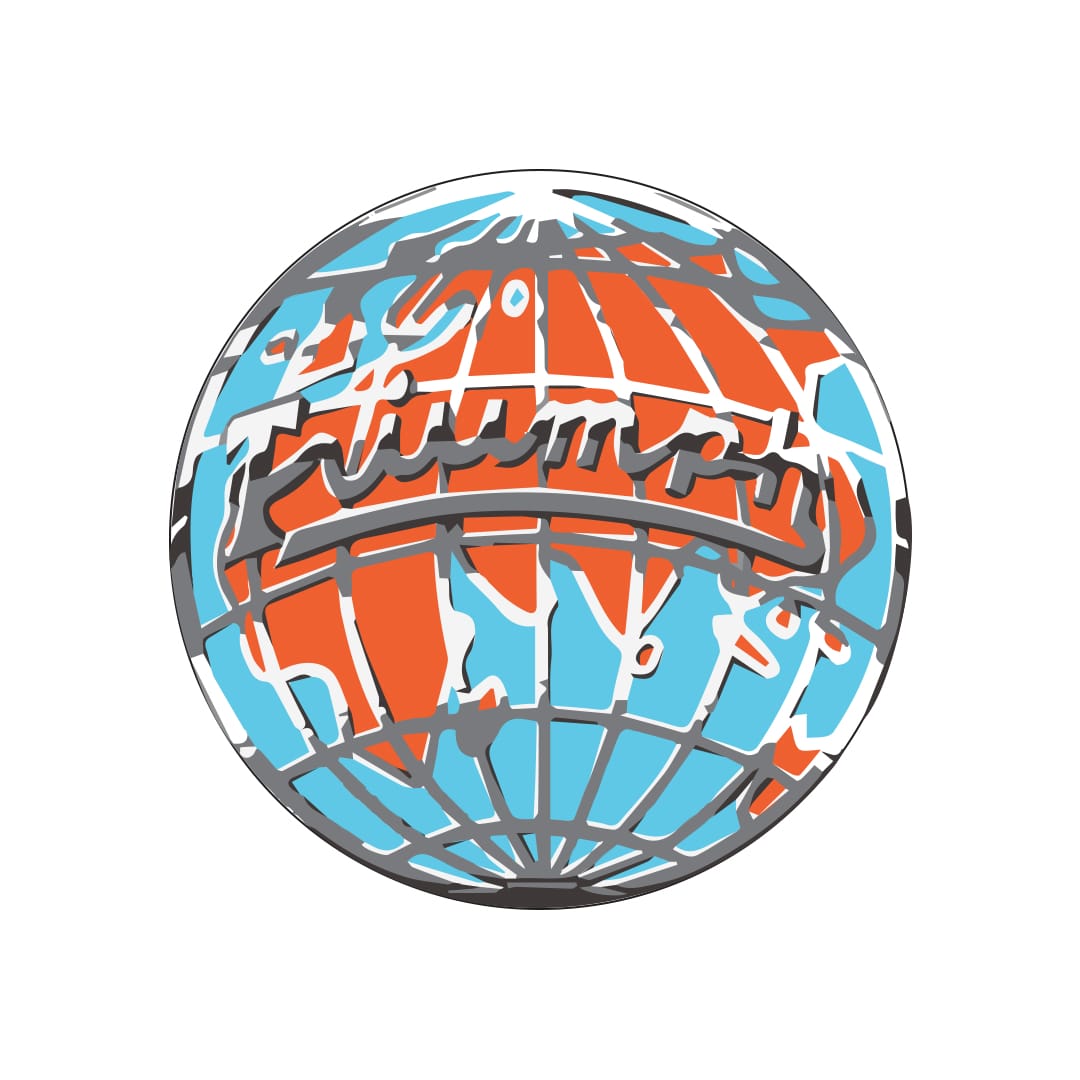
The Triumph brand has enjoyed a rich and varied visual history, with several logos representing the marque over the decades. This derived from an earlier globe logo (called ‘Triumph All Over The World’) shared by Triumph cars and motorcycles back in the early 1930s, when they were made by one and the same company (Triumph started building cars in 1928, but Triumph motorcycles went back another 30 years before that).
As the car and bike production began to separate in 1934, the globe logo with Triumph script across the front of it was created for Triumph cars (at the same time the Triumph motorbike logo became the script that is still used, with slight modification, on Triumph bikes today). The globe logo was used, on and off, on Triumph cars through to approximately 1968. Up till 1953 the globe was always used on Triumph radiator grilles.
From 1953 till 1968 it was most commonly (but not exclusively – there’s always exceptions to the rule) found on wheel hub caps on Triumph cars.
2. The Shield logo
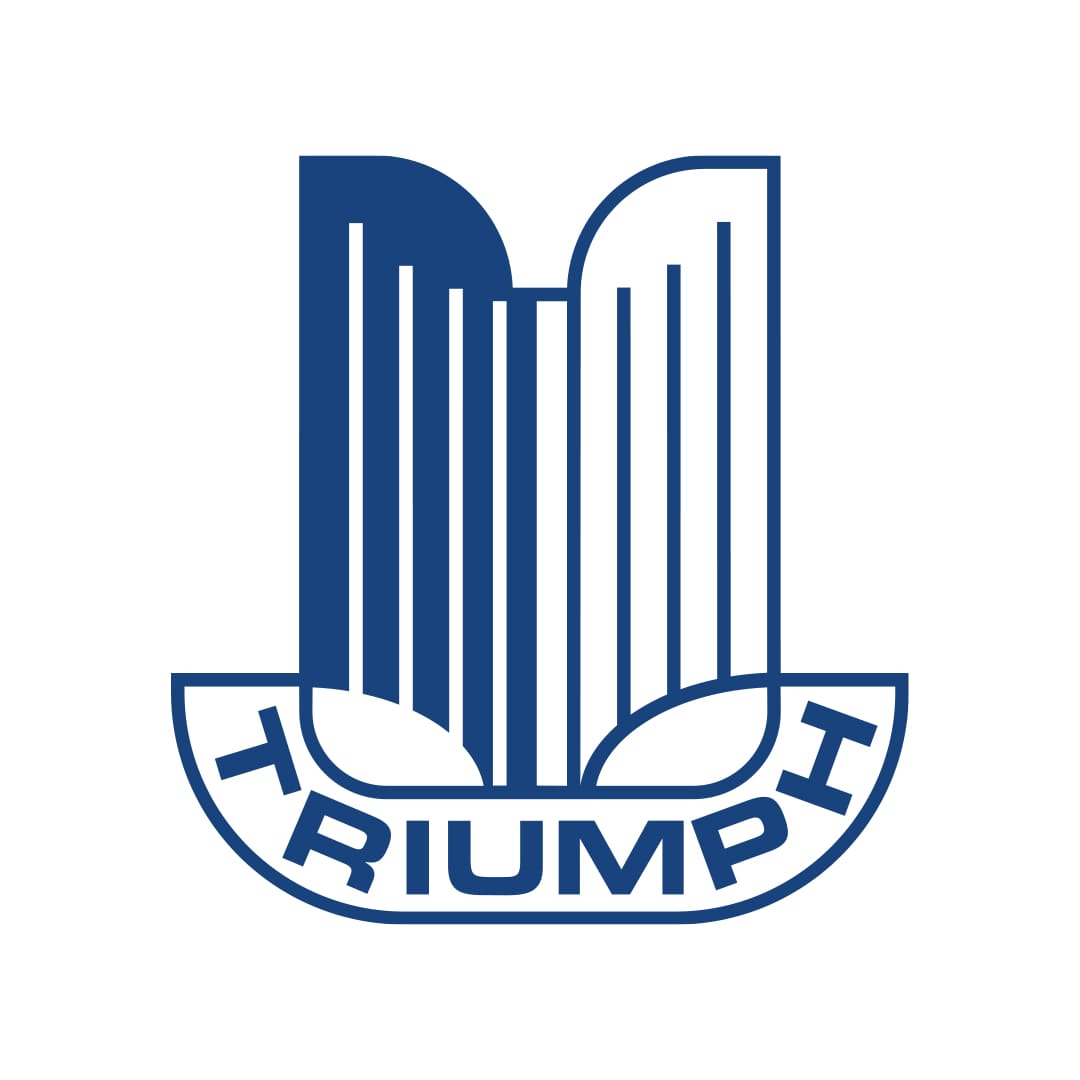
The Triumph Motor Company was bought by Standard Motors after WW2 and, by the early 1950s, both marques had their own versions of a new ‘shield’ logo – Standard got theirs first, in 1950, then Triumph got theirs in 1953. From that period through to the start of the 1960s, the Triumph shield went on the sports cars and the Standard shield went on the saloons. From 1960 on, Standard was phased out and the Triumph name was applied to all cars, saloon or sports.
The logo’s actually not a shield – it’s a representation of the ‘Waterfall’ style chrome slatted radiator grille fitted to Standard cars of that early post war period and certain pre- and just post-war Triumphs – but everyone calls it the ‘Shield’, so the ‘Shield’ it is.
Either ‘Triumph’ or ‘Standard’, or both as ‘Standard Triumph’ can be written in the banner wrapping around the bottom of the logo but, of course, ‘Triumph’ is the one that everybody remembers and uses today. Used from 1953 till 1968 on steering wheels, bonnet fronts/radiator grilles and Triumph dealer forecourt signs.
3. The Laurel Wreath
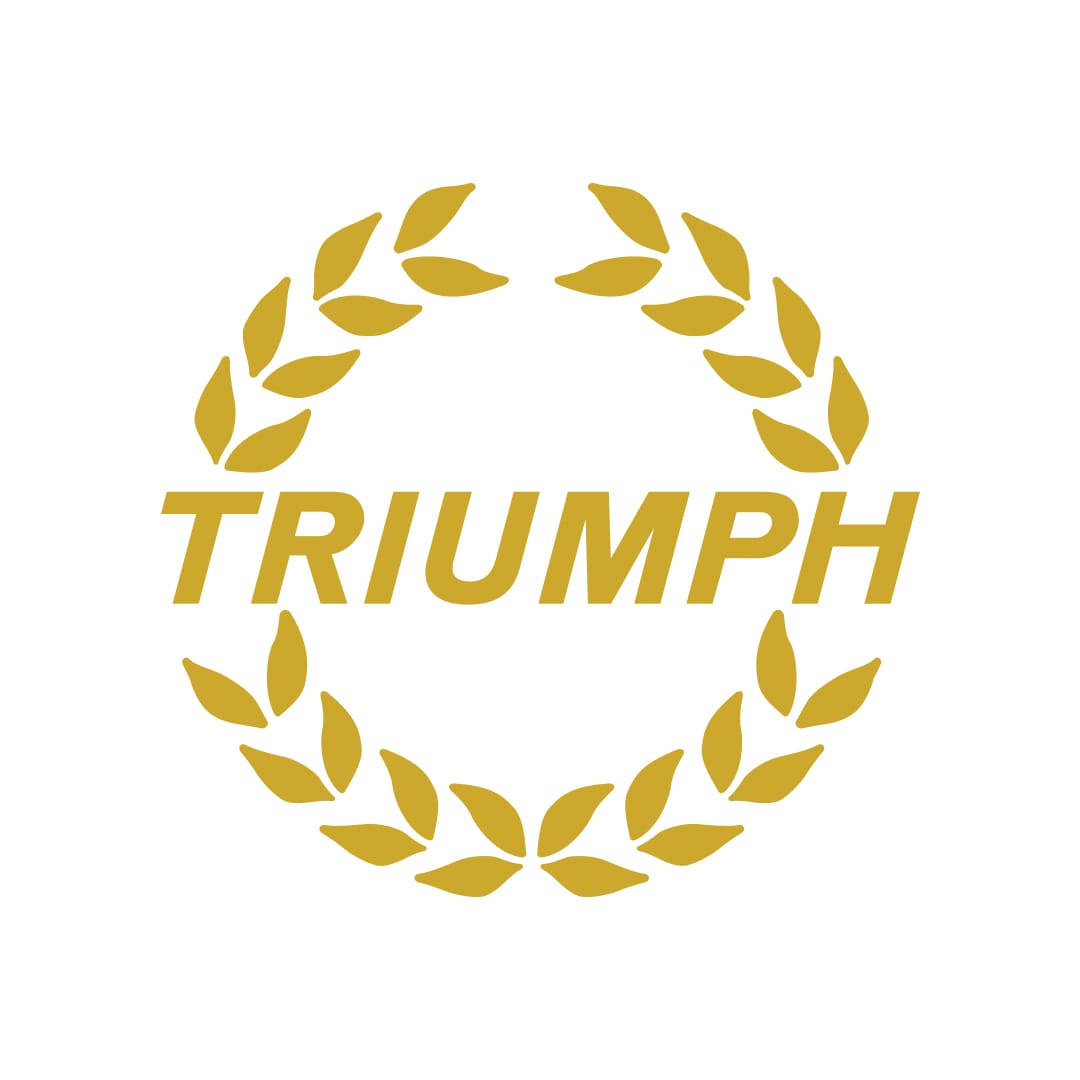
Through the later 1960s and early to mid 70s, Triumph really didn’t have its own logo. The corporate stamp of British Leyland (as the holding company of Triumph, Austin, Morris, MG etc.) meant that the Triumph logo became no more than the word ‘Triumph’ in italic script on badges, occasionally with the Leyland logo alongside it. For 1975, the word ‘Triumph’ became a logo again, with the ‘Triumph’ italic script cutting across a laurel wreath.
This was used on Triumph cars from then onwards in a couple of forms, either as a vinyl sticker in several alternative colours or a glossy enamel style badge with silver ‘Triumph’ letters and gold outline wreath leaves on a black background.
4. The Stag
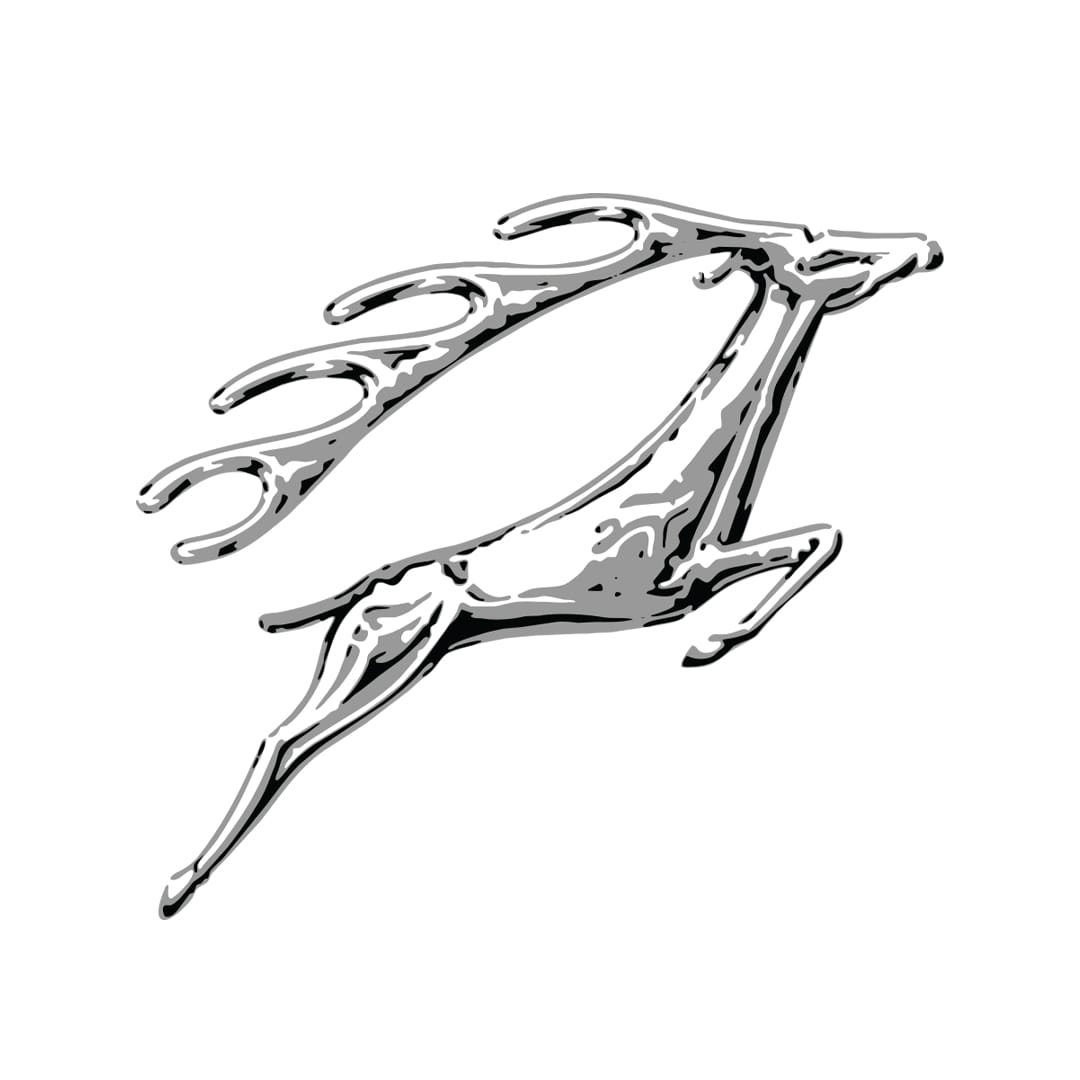
Stylised side-on image of a leaping stag, used (as it says on the tin) on the Triumph Stag and which quickly became regarded as the official logo for the car (even though it had never been intended to be, officially), in the manner of the leaping cat on Jaguar cars.
| Cars Associated With The Triumph Logos: Globe Logo: All pre-war Triumphs up to 1939 Post-war Triumph 1800/2000 Roadster 1946-49 Mayflower/Renown/2000 ‘Razoredge’ models 1949-53 TR2, TR3, TR3A, TR4, TR4A 1953-67 1300 Saloon 1965-70 2000 Mk 1 Saloon & Estate 1963-69 Herald/Vitesse Mk 1 1959-67 Spitfire Mk 1, 2 & 3, GT6 Mk 1 1962-67 Shield Logo: TR2, TR3, TR3A, TR4, TR4A 1953-67 1300 Saloon 1965-70 2000 Mk 1 Saloon & Estate 1963-69 Herald/Vitesse Mk 1 1959-67 Spitfire Mk 1 & 2, GT6 Mk 1 1962-67 Wreath Logo: TR7, TR8 1975-81 Dolomite (facelift) 1976-80 Spitfire 1500 1975-80 Acclaim 1981-84 Stag Logo: Stag 1970-77 No Official Triumph Logo (early British Leyland corporate era): TR5, TR250 1967-68 (usually associated with shield) TR6 1968-76 (usually associated with wreath) 2000/2500 Mk 2 Saloon & Estate 1969-77 (usually associated with wreath) 2.5 PI Mk 1 Saloon & Estate 1968-69 (usually associated with globe or shield) 2.5 PI Mk 2 Saloon & Estate 1969-74 (usually associated with wreath) Herald/Vitesse Mk 2 1967-71 (usually associated with shield) 1500 Saloon 1970-75 (usually associated with wreath) Toledo 1970-75 (usually associated with wreath) Dolomite (pre-facelift) 1970-75 (usually associated with wreath) Spitfire Mk 3 1967-70 (usually associated with shield) Spitfire Mk IV 1970-74 (usually associated with wreath) GT6 Mk 2 1967-70 (usually associated with shield) GT6 Mk 3 1970-73 (usually associated with wreath) Stag 1970-77 (often associated with wreath, but obviously not as much as Stag logo) |
Back To News
